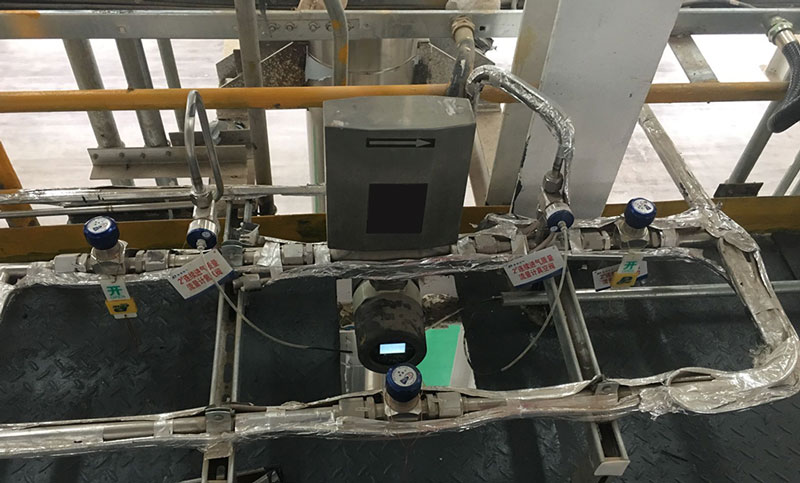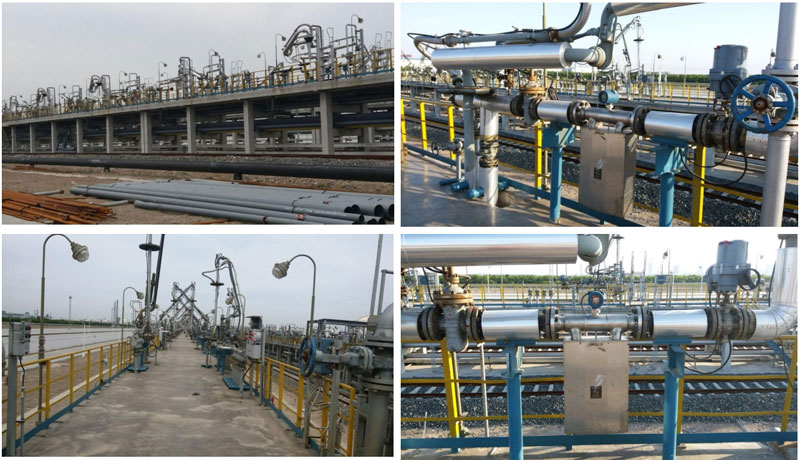
An innovative Coriolis sensor exploits mechanical effects employing torque effects to measure substance displacement. As liquid streams pass through curved conduits, dynamic forces generate displacements in fluid pathway, scaled with transport rates, enabling precise volume monitoring. Renowned for their functional diversity, suitable for various flow materials with reduced pressure disturbance.
- Merits of Coriolis Flow Meters:
- High fidelity measurements:
- Versatile fluid handling:
- Simultaneous density & viscosity assessment:
Mastering Coriolis Flowmeter Theory
Innovative Coriolis meters act as effective measuring devices designed for exact measurement in ductwork. Exploiting Coriolis force mechanics, force-derived deviations enable flow rate calculation. Within vibrating flow paths, streamline bends sideways, in relation to fluid movement. Transducers record deflections, encoding path changes as signals relative to flow volume.
- Uses of Coriolis flowmeters include:
- Production control in chemical sectors
- Agricultural supply
- Environmental surveillance
Finding Ideal Coriolis Devices
Coriolis meters excel in providing dependable accuracy for fluid flow analysis. Yet, with an array of available models, navigating the best fit for applications may be complicated. Key considerations when acquiring your Coriolis flow meter include: * **Characteristics of the fluid:** The fluid measured impacts makeup and performance. * **Flow capacity range:** Meters run within distinct flow limits. Verify your needs are met. * **Accuracy standards:** Different use cases expect diverse precision levels. Determine these to choose models. * **Operational environment:** Factors such as temperature, pressure, and fluid viscosity shape meter outcomes. * **System compatibility:** Assess integration and joining with existing infrastructure.Strengths of Modern Coriolis Meters
Modern Coriolis devices provide a large assortment of benefits for industrial needs. Fundamentally, these meters offer unmatched accuracy, facilitating precise throughput analysis. Supplementarily, Coriolis meters provide simultaneous mass plus density data in one device, providing them exceptionally suited for specialized measurement. Furthermore, their hardiness enables operation in rigorous locales.
- Hence, these devices see pervasive use in areas like oil and gas, chemicals, food and beverage sectors, and pharmaceuticals.
Advanced Calibration Techniques for Coriolis Flowmeters
Stringent operational settings prioritize Coriolis flowmeter performance. Ensuring dependable, repeatable results demands refined calibration methods. These exceed basic protocols by integrating precision hardware and detailed analysis.
Using certified standards enables precise calibration. By comparing meter outputs with known benchmarks, technicians detect variances and apply corrections.
- Multi-point calibration, assessing various flow rates, yields comprehensive performance profiling across meter ranges.
- Advanced software assists data management and visualization, enabling calibration curve creation.
Consistent use of advanced calibration ensures optimal meter accuracy, driving workflow betterment across industries.
Managing Common Coriolis Failures
Coriolis meters provide trusted accuracy and adaptability yet face occasional failings. Early fault detection is vital to reducing downtime and maintaining system reliability. Typical complications involve calibration errors, often caused by improper setup, dirty sensing components, or flow disturbances. Electronic interference may result from changing fluid properties, mechanical vibrations, or electromagnetic disturbances. Effective problem-solving requires thorough examination of conditions, sensor outputs, and operational logs.
- Frequent checking for damage or contamination applies.
- Standards compliance maintains accuracy.
- Checking signals aids early detection.
- Accurate setup helps reduce interference.
Adhering to guidelines mitigates common Coriolis flowmeter challenges, ensuring reliable fluid monitoring and operational consistency.
Coriolis Flow Meter Technology for Industrial Processes
Sensors provide reliable volume determination within industrial applications. Utilizing the Coriolis effect triggered by fluid passage inside vibrating tubes, alterations in tube oscillations correspond to fluid flow rate. This factor enables accurate quantification of mass transport even in fluctuating environments.
These devices suit well a diverse variety of uses, including fluid handling. Their strength makes them perfect for demanding environments, and their smart output enables automated process communication with smart systems.
Precise Flow Rate Determination Using Coriolis Meters
Coriolis sensors deliver strong accuracy across varied applications. They employ mass inertia principles to quantify mass flow, yielding remarkable precision under variable flow regimes. Relative to alternative flow technologies, Coriolis sensors provide uninterrupted readings, facilitating accurate oversight. Their dual ability to measure mass flow and density makes them ideal for multivariate flow assessments. Furthermore, Coriolis sensors exhibit endurance, thriving in severe operating locations. This combination of accuracy qualifies Coriolis sensors as a dominant choice medidor coriolis for demanding flow measurement situations.Coriolis Instruments for Hydrocarbon Industry
Coriolis flowmeters have established themselves as dependable tools in the oil and gas field. Their capacity to simultaneously measure mass flow and medium concentration renders them flexible for many operational tasks. In distribution workflows, Coriolis meters facilitate monitoring hydrocarbon streams in loading terminals. They also fulfill vital roles in output monitoring and guarantee precise metering for cost control.Water Sector Instrumentation with Coriolis Meters
Such devices deliver key data acquisition for exact assessment in water management contexts. Utilizing mass effect principles, they record stream deviation through bent tubes. This fine data permits real-time fluid quantity supervision, indispensable for enhancing system efficiency.
- Functions of Coriolis flowmeters in water systems cover broad functions, such as: channeling water to homes and industries, supervising water demand for irrigation and renewable energy, and directing water flow in filtration plants.
- Positive Aspects for Coriolis flowmeters in this area constitute: superior sharpness, broad diversity across flows, and easy maintenance requirements.
Maximizing Precision with Coriolis Flow Technology
Coriolis flowmeters have secured themselves as accurate solutions for measuring solutions. These devices apply the Coriolis effect to measure both mass flow and fluid density. Leveraging Coriolis technology can maximise measurement accuracy, decrease operating expenses, and yield insightful data about process attributes. Their flexibility enables use in a ample range of domains such as oil and gas.
